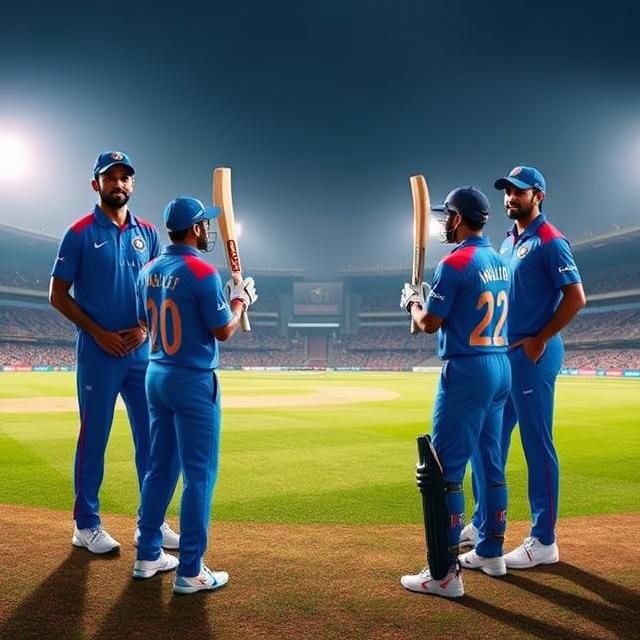Cricket Pakistan Crowd: A Roar That Echoes Through the Ages
Cricket Pakistan Crowd: A Roar That Echoes Through the Ages
The passionate roar of the Pakistani cricket crowd is a symphony of sound, a vibrant tapestry woven with emotion and history. It’s more than just cheering; it’s an experience, a cultural phenomenon that resonates far beyond the cricket pitch.

This article delves deep into the heart of this passionate fanbase, exploring the rich history, the cultural significance, and the unique characteristics of the Pakistani cricket crowd. We will also examine the economic and social influences on this extraordinary phenomenon.
A History Steeped in Passion
Pakistan’s cricket history is intricately linked with the fervent energy of its supporters. From the early days of Test matches to the modern-day T20 extravaganzas, the Pakistani crowd has consistently delivered an electric atmosphere. This passionate following has been crucial in shaping the national narrative around the sport, creating a unique sense of shared identity and pride.
The crowd’s dedication is not simply a matter of support for individual players. It’s a demonstration of national pride, a vibrant expression of cultural identity. It’s a unifying force, a shared emotional experience that transcends age, class, and even political divides in many instances.
Cultural Significance and Emotional Outpourings
Cricket in Pakistan is more than a game; it’s a celebration of national identity, a vibrant tapestry of tradition and cultural heritage. The fervor of the crowd mirrors the profound significance cricket holds in Pakistani society.
The emotional investment is palpable. From the boisterous chants to the quiet moments of collective anticipation, every nuance reflects the collective hopes, dreams, and anxieties of the nation. A win fuels a sense of national pride, while a loss often sparks passionate discussions and reflections on the team’s performance.
The Economic and Social Context: A Powerful Influence
The Pakistan cricket crowd isn’t just emotionally invested; it’s also deeply connected to the country’s economic and social realities. The economic impact of cricket, particularly in terms of ticket sales, tourism, and media rights, is undeniable. Major matches often draw huge crowds, turning stadiums into vibrant marketplaces.
Beyond the financial aspects, cricket often serves as a social equalizer. People from different backgrounds come together, sharing a common passion and creating a unique sense of camaraderie. This shared experience strengthens social bonds, fosters community spirit, and promotes a sense of collective identity.
A Multi-Layered Perspective: Beyond the Roar
Examining the Pakistan cricket crowd requires looking beyond the sheer noise and the palpable energy. We need to understand the social and cultural context, the historical narrative, and the individual experiences that shape this unforgettable phenomenon.
For instance, the vibrant colors of the Pakistani flags, the intricately designed banners, and the enthusiastic chants contribute to the visual and auditory spectacle. These expressions reflect a deeper connection between the crowd and the national identity.
It’s essential to recognize the wide range of experiences within the crowd itself. While a unified energy often emerges, there are individual stories and varying levels of engagement. There are the dedicated supporters who attend every match, and there are others who only show up for major tournaments. Understanding this diversity is critical for a comprehensive understanding.
Challenges and Criticisms: Navigating the Complexities
The vibrant Pakistani cricket crowd, while undeniably passionate, isn’t without its challenges. Occasional instances of unruly behavior, sometimes associated with the intense emotional investment in the games, can cast a shadow on the positive aspects of the passionate fanbase. However, these instances are not representative of the entire group and require careful consideration without resorting to broad generalizations.
Dealing with these concerns requires a nuanced understanding of the factors contributing to such incidents. Addressing underlying issues, like economic hardship or social inequality, while supporting responsible behavior within the stadium, can help alleviate these difficulties.
The Future of the Pakistan Cricket Crowd: A Promising Prospect
The future of the Pakistani cricket crowd looks promising. The enduring passion for the sport, the strong cultural links, and the economic significance all point to a continued vibrancy. Continued efforts to cultivate a positive and respectful atmosphere, alongside understanding the challenges within this vibrant context, are vital. By focusing on fostering shared values and promoting inclusivity, the vibrant spirit of the Pakistan cricket crowd can continue to thrive and inspire generations to come.
As Pakistan continues to develop as a nation, the unwavering support of its cricket fans will play a significant role in shaping the future of the sport and reinforcing the national identity. The echoes of the roar will continue to reverberate through time, carrying the passion and pride of a nation deeply invested in the sport.
Conclusion: More Than Just a Crowd
The Pakistani cricket crowd is more than just a collection of individuals; it’s a living embodiment of national identity, passion, and community spirit. It’s a rich tapestry of tradition and culture, interwoven with the hopes and dreams of a nation. The experiences within this vibrant environment offer valuable insights into the complexities of Pakistani society. The relentless energy and fervent support consistently delivered by Pakistani fans shape the narrative surrounding this national sport, leaving an unforgettable impression on all those who experience it.
From the bustling stadiums to the quiet homes watching the matches, the passionate Pakistani cricket crowd continues to hold a unique place in the global sporting landscape.